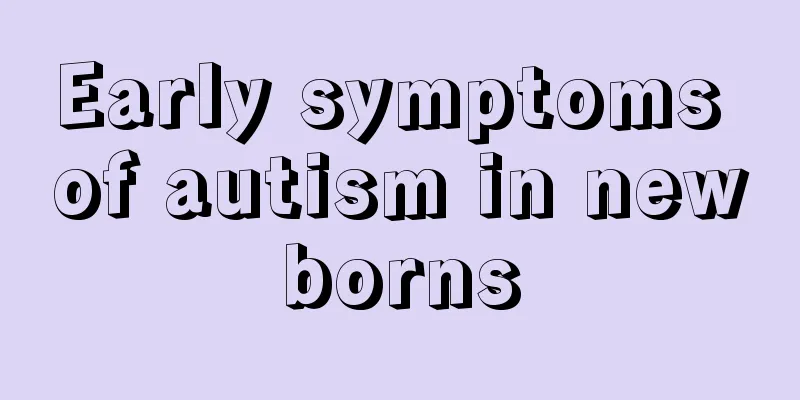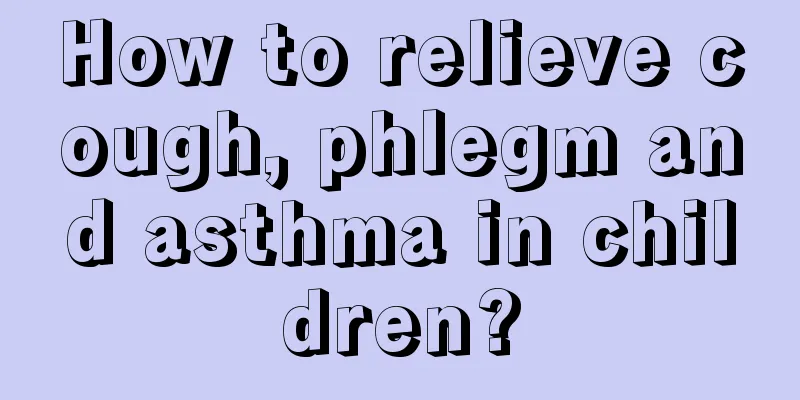Reasons for slow response in newborns

|
There is a folk legend that babies born naturally are smarter than those born by caesarean section. In fact, this statement is extremely unconvincing. Some newborns are born smart, while some are smart because of acquired learning. So, what is the reason for the slow reaction of newborns? Below I will introduce the relevant details to you in detail, hoping to help you better understand it. Newborns may show slow reactions when they have central nervous system diseases and other conditions such as severe infection, shock, dehydration, acidosis, metabolic disorders, anemia, hypothermia, and respiratory failure. Reasons for slow response in newborns 1. Hypoxic-ischemic encephalopathy Neonatal hypoxic-ischemic encephalopathy refers to cerebral hypoxic-ischemic damage caused by perinatal asphyxia and hypoxia, which manifests clinically as a series of abnormal neurological manifestations. It is common in full-term newborns with severe asphyxia. Severe cases may result in death in the early neonatal period. Survivors often have sequelae of neurological damage, such as mental retardation, cerebral palsy, epilepsy, ataxia, etc. It is the most important cause of perinatal brain damage. The baby often shows irritability on the first day after birth. After 2 to 3 days, the low reflexes become gradually obvious, and consciousness disorders such as drowsiness, dullness and light coma appear. The muscle tone of the limbs is reduced, which is more obvious in the upper limbs than in the lower limbs. When reacting to traction, the head hangs back at a 90° angle to the trunk. The hugging reflex and sucking reflex are weakened or disappear, often accompanied by convulsions and increased intracranial pressure. Cerebral edema is common, and in severe cases, it is accompanied by subarachnoid hemorrhage or intracerebral hemorrhage. 2. Respiratory failure Respiratory failure is a clinical syndrome characterized by severe respiratory dysfunction due to various reasons, resulting in a decrease in arterial oxygen partial pressure (PaO2), with or without an increase in arterial carbon dioxide partial pressure (PaCO2), resulting in a series of pathophysiological disorders. It is a functional disorder rather than a disease and can be caused by lung disease or be a complication of various diseases. Unlike infants, newborns do not become irritable or even have convulsions when they are deprived of oxygen. Instead, newborns, especially premature infants, quickly enter a state of inhibition, showing lethargy, poor response, and decreased muscle tone; their breathing slows down, and they may even experience irregular breathing or respiratory arrest. If it is severe type II respiratory failure, the child's reaction will be worse, and even oxygen inhalation cannot improve the reaction and breathing, and mechanical ventilation with a ventilator is required. 3. Hypothermia When the skin temperature of the newborn is maintained at 36-37℃, the oxygen consumption is lowest while ensuring normal metabolism. Hypothermia refers to a core (rectal) body temperature ≤ 35°C, characterized by low body temperature, cold body surface, and poor response. The mechanism of hypothermia is decreased heat production or increased heat dissipation, or both. Therefore, among neonatal diseases, any condition that can cause a decrease in heat production or an increase in heat dissipation can be treated with hypothermia as the main symptom. Hypothermia can not only cause skin swelling, but also damage the tissues of important organs in the body, affect their functions, and even lead to death. When the body temperature drops below 35℃, the reaction becomes slow, and when it drops below 33℃, the person becomes semi-comatose. For those who have a slow reaction due to a drop in body temperature caused by cold stimulation or insufficient warmth preservation, their reaction will improve as their body temperature rises after rewarming. Patients who have a slow reaction due to a drop in body temperature caused by worsening of the primary disease, reduced food intake and heat production often have manifestations of other primary diseases, such as neonatal pneumonia, neonatal sepsis, etc. 4. Central nervous system infection Full-term newborns often show irritability and allergy to stimuli in the early stages of purulent meningitis. When the disease progresses to a certain extent, they may become unresponsive, indicating that their condition is getting worse. Premature infants with encephalitis may not be irritable, but only show hyporesponsiveness, often accompanied by convulsions, tight anterior fontanelle and other symptoms of infection. Lumbar puncture can confirm the diagnosis. Many neonatal diseases such as dehydration acidosis, shock, anemia, intracranial hemorrhage, trisomy 21, and acute renal failure can all manifest as slow reactions. The above are the reasons why newborns have slow reactions. Once you find your child like this, please don’t be discouraged. If you receive treatment in time, the situation will gradually improve! For more knowledge, you can follow the editor at any time. The editor will continue to contribute sincerely to everyone. |
<<: Treatment of hemolytic jaundice
>>: What are the preventive measures for infectious diseases in spring for young children?
Recommend
Causes of oral ulcers in children
Children have relatively poor immunity, so they a...
Things to note during the growth and development period of girls
Most girls grow and develop during the junior hig...
What are the measures to relieve baby’s constipation and smelly farts?
The baby's digestive function is very weak. I...
Commonly used drugs for treating diarrhea in children
Children often eat without paying attention to th...
What to do if your baby has a high temperature convulsion
If the baby has a high temperature convulsion, it...
What is good for children to eat for breakfast? Nutritional matching is very important
Mothers need to pay more attention to the nutriti...
Clinical manifestations of cerebral palsy in children
Cerebral palsy in children is commonly known as c...
What should babies eat if they sweat a lot?
Children are in an excited state every day and pl...
Spring Festival travel rush is here, here are some tips for children’s travel health!
It's the Spring Festival travel season again....
Baby's two feet are always rubbing together
Some parents will find that their babies always r...
What are the reasons why children cannot sleep well at night?
Many children play all day long, so logically the...
Treatment of sinusitis in children
If children's fever and colds are not treated...
Why does the baby retch when drinking milk?
Newborn babies do not have the ability to express...
How to care for children with excessive drooling
Many people have drooling. People who often drool...
What to do if children have vesicular herpes?
When some children develop herpes, the most impor...









